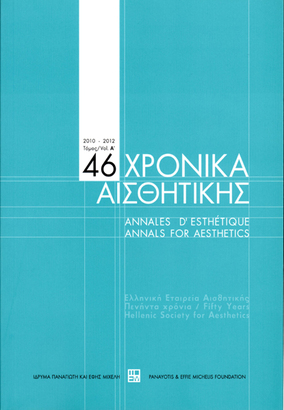Το επιστημονικό σλόγκαν "όλα επιτρέπονται" και η εμβέλεια του στην τέχνη
Part of : Χρονικά αισθητικής : ετήσιον δελτίον της Ελληνικής Εταιρείας Αισθητικής ; Vol.46, No.Α, 2010, pages 133-143
Issue:
Pages:
133-143
Parallel Title:
The epistemological slogan “everything goes” and its impact on art
Section Title:
Αισθητική - Φιλοσοφία της Τέχνης - Ιστορία της Τέχνης Aesthetics/Philosophy of Art - History of Art
Author:
Abstract:
If we follow at the same time the history of science and the history of art, we observe certain coincidences in avant-garde and revolutionary achievements: in the latter years of the Renaissance, the geocentric concept of the universe is shaken by the theories of Copernicus and, concurrently, blind devotion to the canons of renaissance art are shaken by “mannerism”. In the early twentieth century, Einstein introduces the special and the general theories of relativity, and Marcel Duchamp promotes the “ready mades”, everyday objects - a bicycle wheel or a urinal - as works of art. Moreover, in the 1960s and 1970s, we have groundbreaking theories on the constitution and development of science (Kuhn, Feyerabend), as well as radical theories on the interpretation of works of art (Danto, Goodman, Belting a.o.). We could find many other examples, if we persisted in our efforts.Moreover we observe that for both science and art the theories of the epistemologists Kuhn and Feyerabend apply retrospectively. Indeed, for twentieth-century art Feyerabend’s epistemological slogan “everything goes”, coined in 1975, applies par excellence. Of course, it applies only to “militant” art and not to theories about art, because in these not “everything goes”, as perhaps Danto would have wanted - judging from his writings. In addition, art history informs us that, in general, theories are formulated “after” the works are created, and not in advance, as Danto expressly maintains, referring to the way in which a work of art is established.
Subject:




